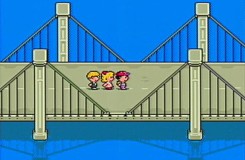

With final exams beginning to wind down, I’ve had a chance at last to get back to playing Mother 3, the Japan-exclusive sequel to the cult SNES RPG Earthbound. The game was translated to English by the dedicated fans at Starmen.net, and was finally released last Fall to much excitement and acclaim.
I’m currently about halfway through the game, having completed chapter 4 by personally dispatching a disgruntled bass guitar1. The game is noteworthy in countless ways, but what has really struck me so far is how much the game diverges from the Earthbound formula. This is peculiar, given how ostensibly similar the two games are. To use a cooking metaphor, it’s as if the designers used the same ingredients, but tweaked the recipe and ended up with a very different dish.
As I was assembling my thoughts on the game into some semblance of a thesis, I happened across an interview with lead designer Shigesato Itoi in which he expressed exactly what I had been struggling to say:
When we were working on [Earthbound], RPGs were all basically “road movies”. The main character would set out on a journey and go from town to town. By laying this out in a spiraling fashion, an RPG’s structure would start to resemble a simple board game.
But I felt that there was a limit to this road movie/board game style of moving from one spot to the next. Kind of like, “Okay, I made it this far, but what’s happened to the people in the last town?” […] That’s when I thought of an RPG in which you stay in a certain town for a long time.
[…] The game would have character relations, and the people would all have their own lives. This way, we could do all sorts of things in the game. For example, someone who recently hung laundry out to dry would be wearing those clothes the next day. I wanted to make an RPG in which you could grow closer to the people as time went on.
In my opinion, this is the key difference between Earthbound and Mother 3. The former is about a journey to far off places, while the latter is about seeing the same place from many different perspectives.
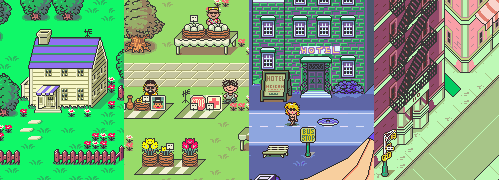
The first half of Earthbound is organized in such an explicitly board game manner that it’s difficult not to conclude that this was an intentionally facetious choice. The first four towns are laid out in a crooked line, the latter three being directly connected by a single highway. Their names, in order, are Onett, Twoson, Threed and Fourside. There is a strong sense of progression as you travel down the road, and until very late in the game there is no necessity (and little incentive) to backtrack.
By contrast, the entire first half of Mother 3 is spent in and around the first town: Tazmily Village. However, in that time you sequentially control four different protagonists: Flint, Duster, Salsa and Lucas. Each chapter reveals a facet of the village’s collective character; Flint demonstrates their good nature, while Salsa exposes their naivety. Furthermore, several significant events are shown from a different perspective in each chapter, slowly revealing a complete picture of what actually took place. Finally, we get to see how the village slowly changes under the effects of the peddler’s meddling2. Progression is decoupled from displacement, and is instead tied to the development of Tazmily Village as a character.
It took me a while to wrap my head around exactly what Mother 3 was doing. I was stuck in Earthbound‘s board game progression mentality, and was anticipating the illusory “next village” just over the horizon. In retrospect, I’m glad that Mother 3 took the time to develop this small cast of quirky characters.

1 Yes there are minor spoilers in this post. Lose the ball and chain!
2 An attack on industrialization worthy of Tolkien.

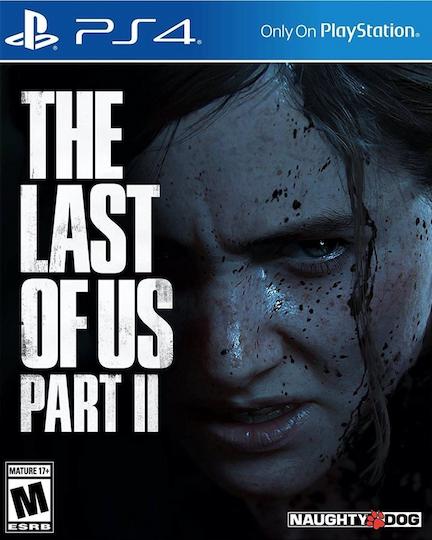

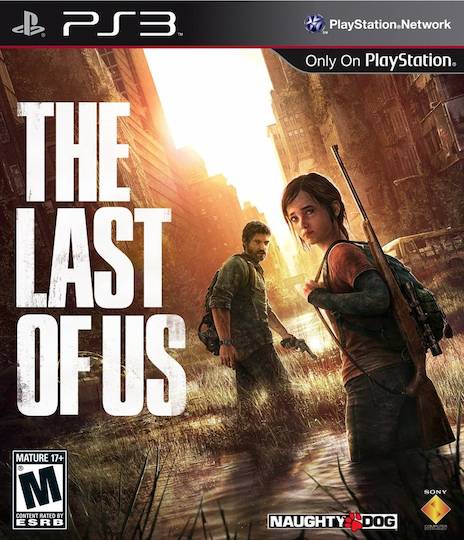
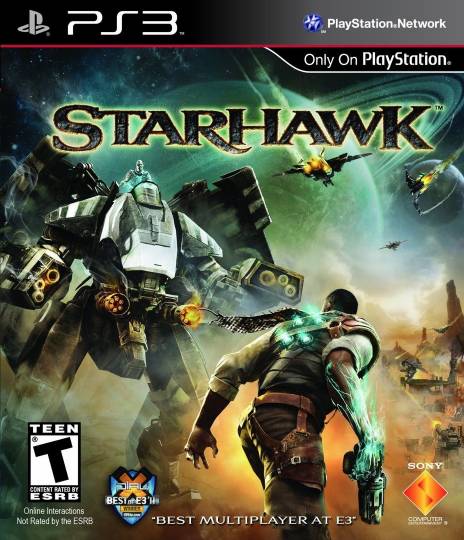
April 26th, 2009 at 12:53 am
[…] Progression in Mother 3 […]
April 28th, 2009 at 4:41 pm
I wonder if the fact I never played EarthBound made Mother 3 easier for me to swallow. Although I must say it is nice to see what the designer of Mother 3 had in mind for this unusual title. The way the town evolves over the course of the game is one way of really getting to know it (and care for some of the stuff its going through).
May 1st, 2009 at 9:37 am
“An attack on industrialization worthy of Tolkien.”
Exactly.